|
#2
26th November 2014, 04:05 PM
| |||
| |||
| Re: AIPMT Prelims Exam Question Paper
As you want to get AIPMT prelims exam question paper so here I am providing you some question of that paper: Two persons of masses 55 kg and 65kg respectively, are at the opposite ends of a boat. The length of the boat is 30. m and weighs 100 kg. The 55 kg man walks up to the 65 kg man and sits with him. If the boat is in still water the center of mass of the system shift by: (1) zero (2) 0.75 m (3) 3.0 m (4) 2.3 m Ans.[1] When a mass is rotating in a plane about a fixed point, its angular momentum is directed along (1) the radius (2) the tangent to the orbit (3) a line perpendicular to the plane of rotation (4) the line making an angle of 45º to the plane of rotation. Ans.[3] Two sources of sound placed close to each other, are emitting progressive waves given by y1 = 4 sin 600 πt and y2 = 5 sin 608 πt: An observer located near these two sources of sound will hear (1) 8 beats per second with intensity ratio 81 : 1 between waxing and waning (2) 4 beats per second with intensity ratio 81 : 1 between waxing and waning (3) 4 beats per second with intensity ratio 25 : 16 between waxing and waning (4) 8 beats per second with intensity ratio 25 : 16 between waxing and waning Ans.[2] An electric dipole of moment 'p' is placed in an electric field of intensity 'E'. The dipole acquires a position such that the axis of the dipole makes an angle θ with the direction of the field. Assuming that the potential energy of the dipole to be zero when θ = 90º, the torque and the potential energy of the dipole will respectively be (1) pE sin θ, 2pE cos θ (2) pE cos θ, – pE sin θ (3) pE sin θ, – pE cos θ (4) pE sin θ, – 2p E cos θ Ans.[3] When a biconves lens of glass having refractive index 1.47 is dipped in a liqud, it acts as a plane sheet of glass. This implies that the liquid must have refractive index. (1) greater than that of glass (2) less than that of glass (3) equal to that of glass (4) less than one Ans.[3] C and Si both have same lattice structure, having 4 bonding electrons in each. However, C is insulator where as Si is intrinsic semiconductor. This is because. (1) The four bonding electrons in the case of C lie in the second orbit, whereas in the case of Si they lie in the third. (2) The four bonding electrons in the case of C lie in the third orbit, whereas for Si they lie in the fourth orbit. (3) In case of C the valence band is not completely filled at absolute zero temperature. (4) In case of C the conduction bans is partly filled even at absolute zero temperature Ans.[1] 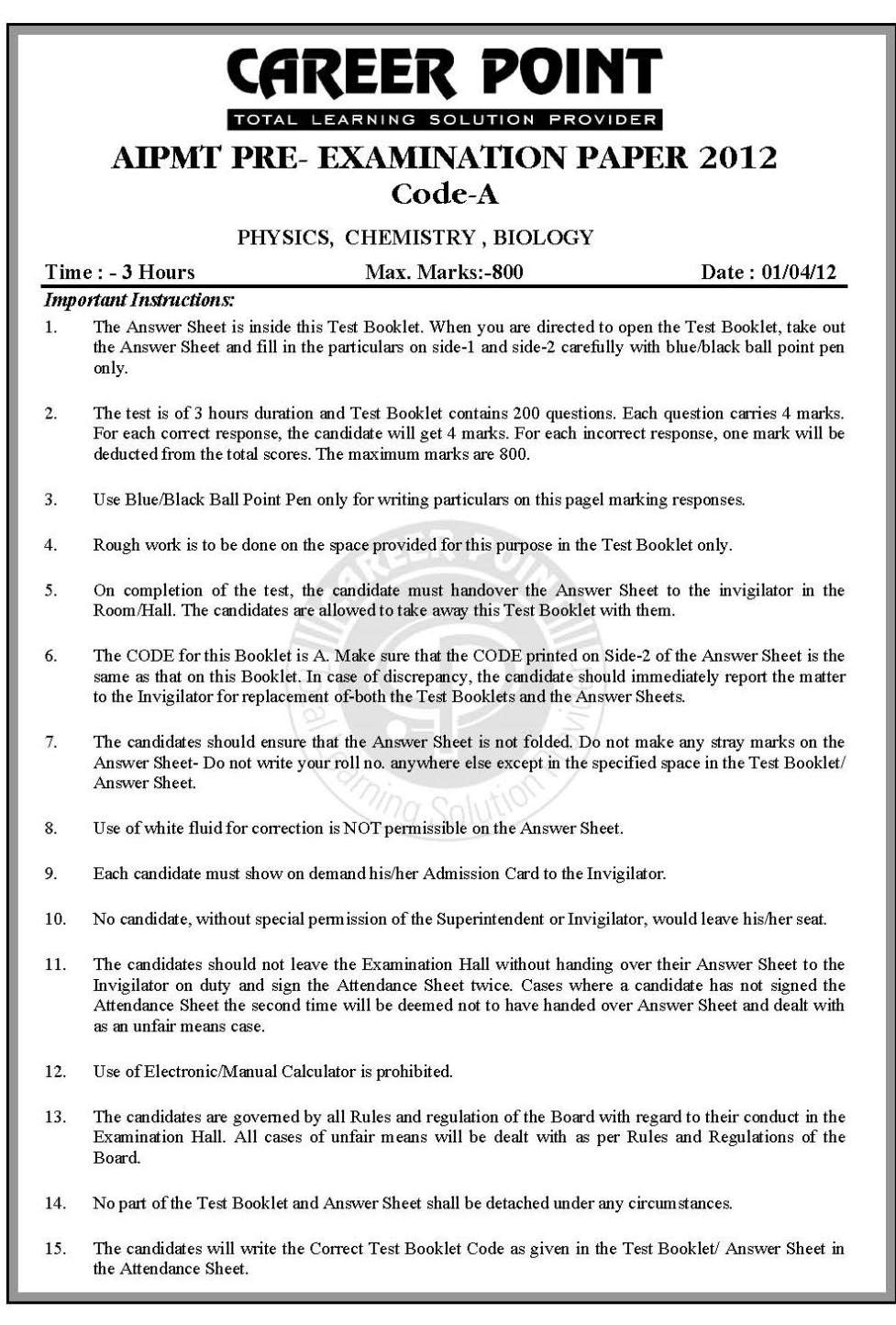 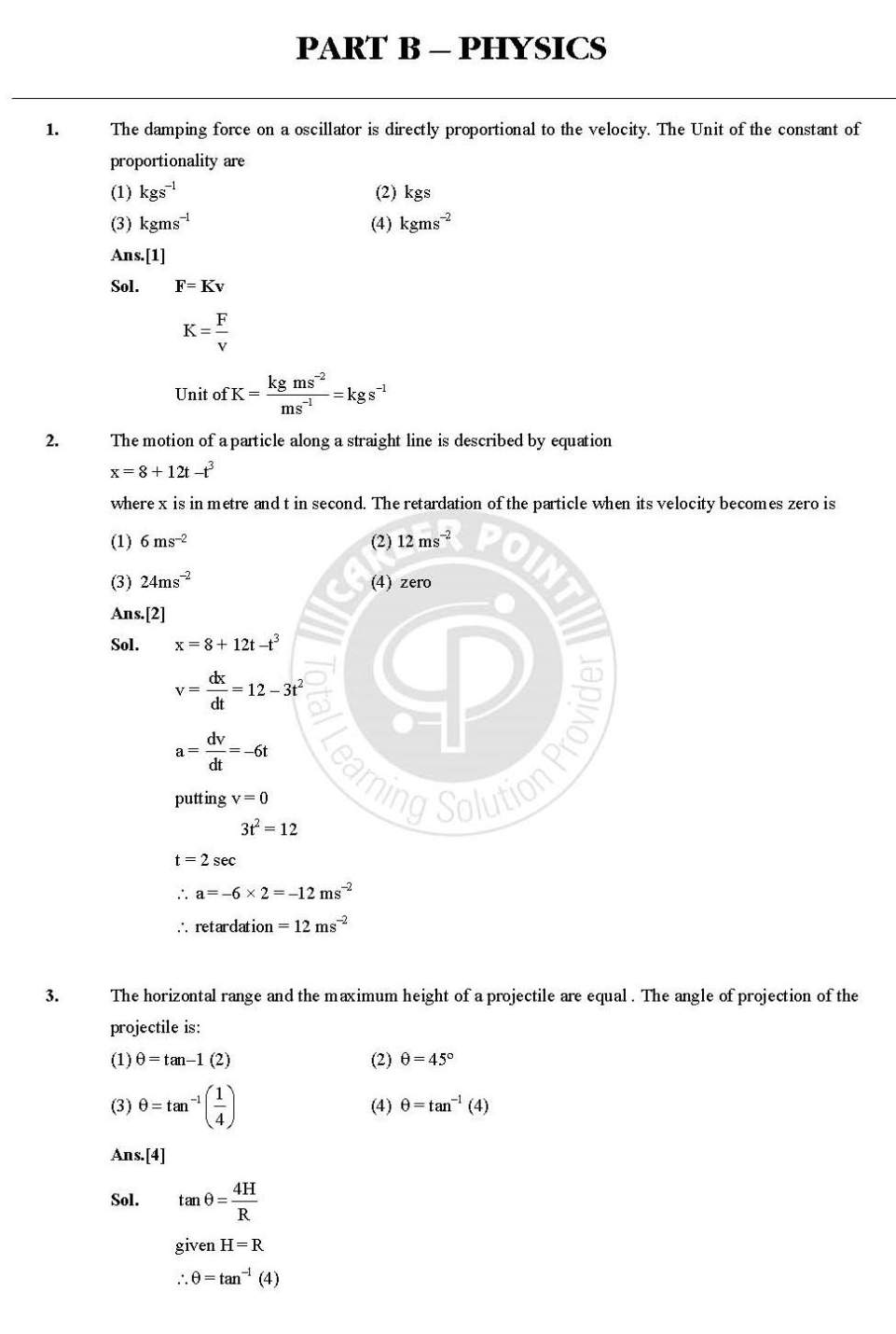 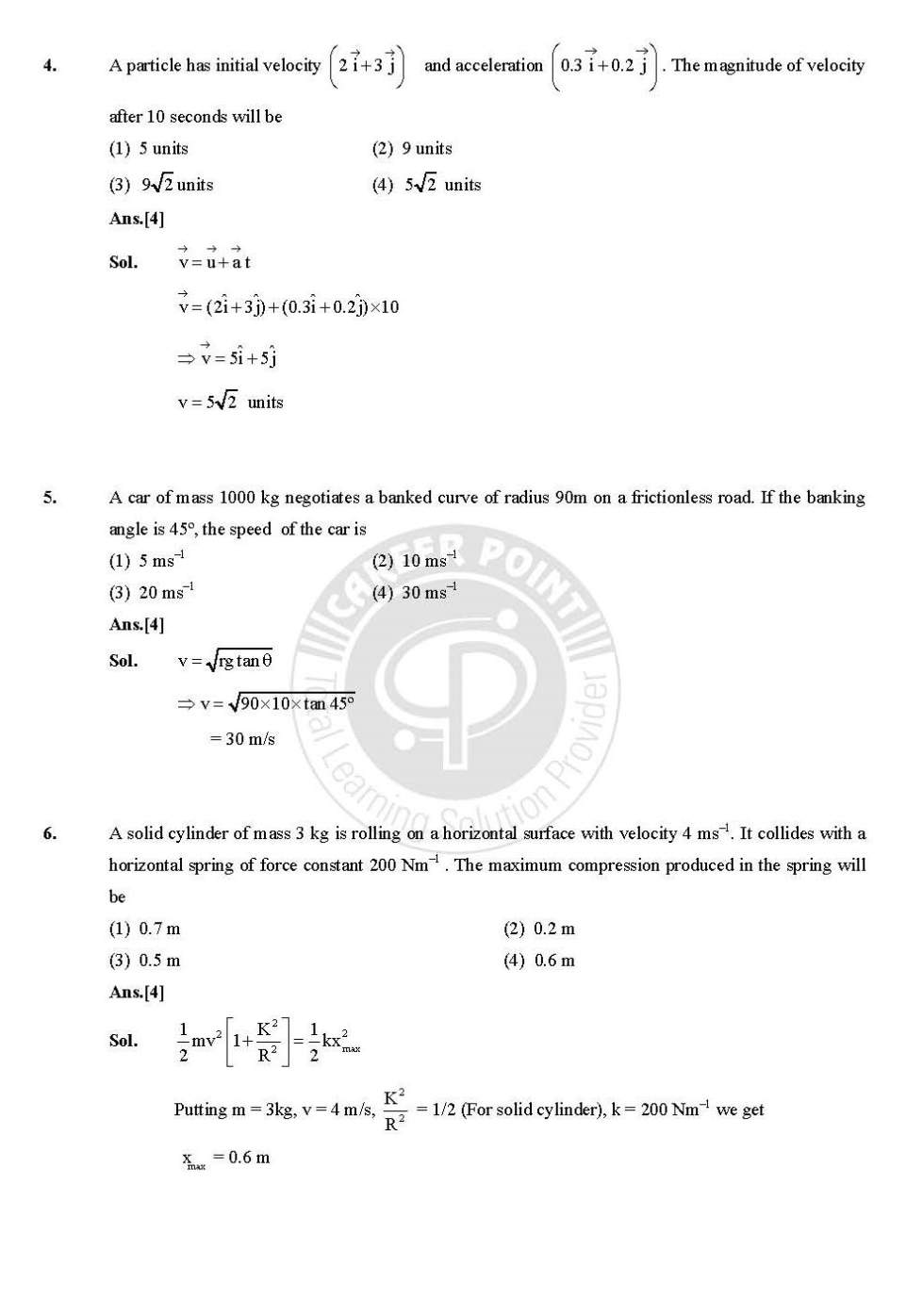  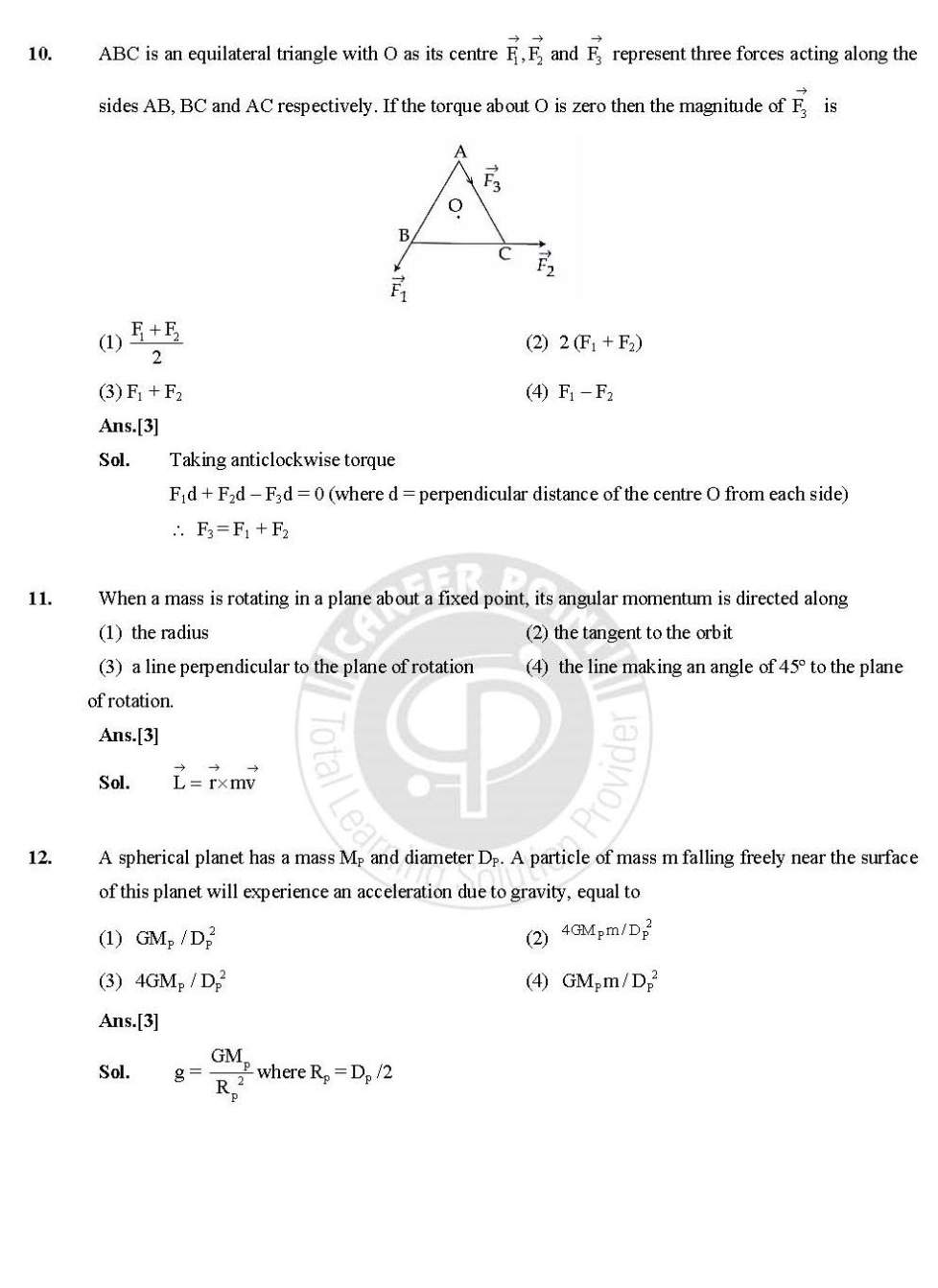 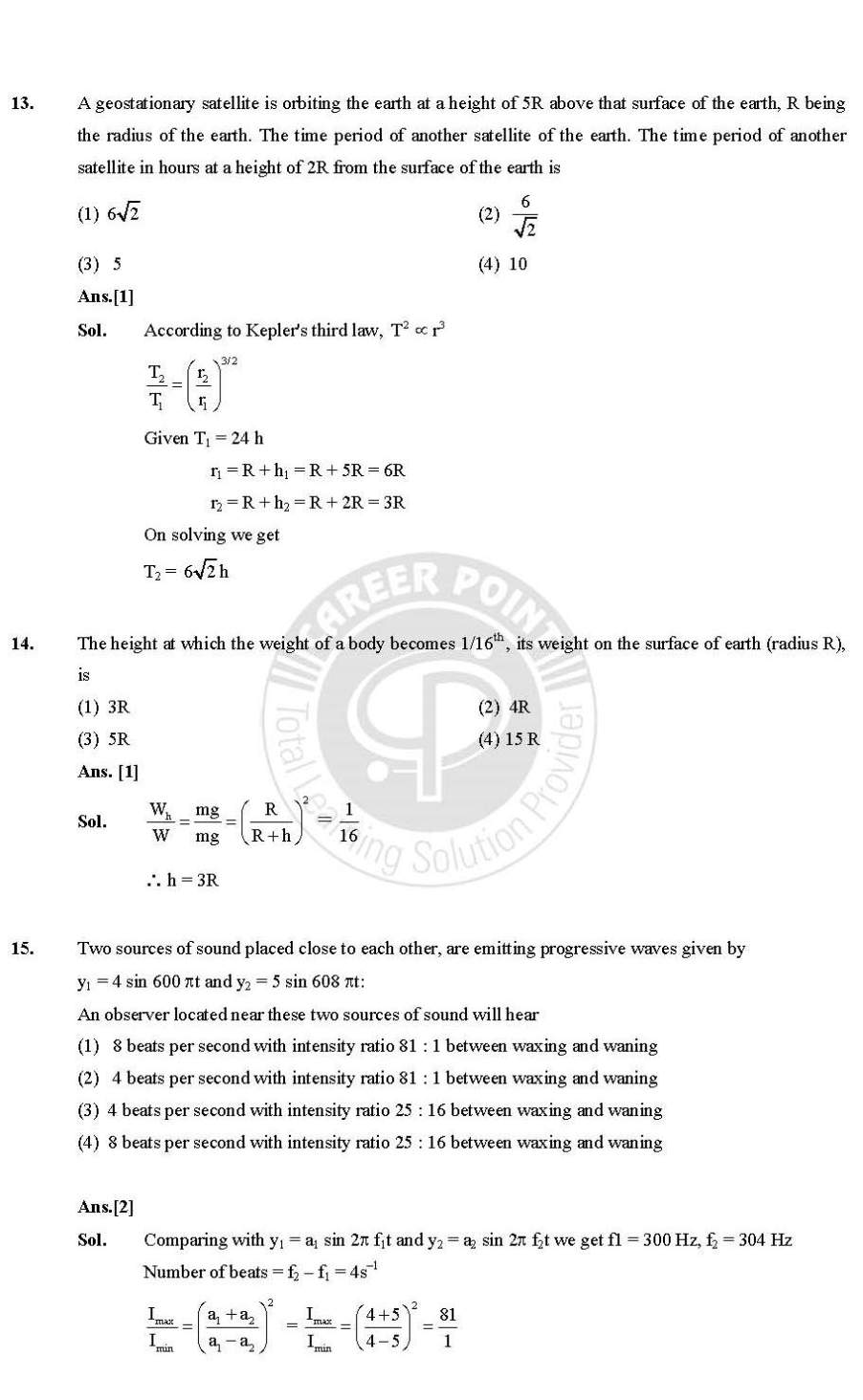 For full question paper here I am giving you one attachment: |